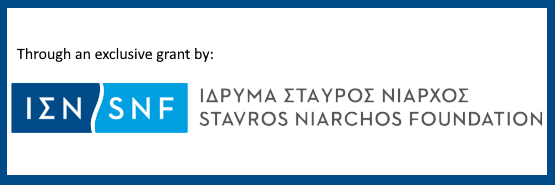Wednesday 3 October 2018 16:00 – 17:00 Seminar Room 1
“Defining canonical NF-κB regulated target genes involved in lung cancer to develop novel biomarkers and potential therapies”
Dr. Geogios Markopoulos Institute of Molecular Biology and Biotechnology (IMBB)
Abstract
Lung Cancer is the leading cause of cancer incidence and mortality worldwide. Non-Small Cell Lung Cancer (NSCLC), the major subtype of lung cancer (~85%) usually evolves after oncogenic driver mutations in K-Ras or EGFR, or mutations in tumor suppressor p53 gene. All the aforementioned mutations have been linked with canonical IKKβ/NF-κB pathway activation. NF-κΒ pathways play crucial role in several types of cancer, including NSCLC, but the role of NF-κB target genes remains elusive. The purpose of the current study was to define NF-κB regulated genes during NSCLC development, as possible biological markers or potential therapeutic targets. We have developed, in collaboration, tamoxifen-inducible lung-specific bi-transgenic mice (SPC-CreERT2; IKKβf/f) and showed that IKKβ acts a tumour promoter in NSCLC. We have also developed in vitro doxycycline inducible IKKβKD cell culture models derived from NSCLC cell lines A549, H1299, and H1437. We found that IKKβ knockdown (IKKβKD) had an effect in cell cycle distribution and growth of NSCLC cells. Utilising xenograft mouse models, we confirmed that IKKβKD resulted in the impairment of tumour growth. To define possible targets, we performed Nanostring analysis in A549 IKKβKD cells, and identified several miRNAs showing altered expression, including miR-92b that is down-regulated and miR-32 that is up-regulated. Since IKKβ activates the canonical NF
κΒ signaling pathway, resulting in the nuclear translocation of p65/p50 heterodimers, to investigate whether the effects of IKKβ in NSCLC development is dependent on canonical NF-κΒ signalling, we targeted the RelA/p65subunit in A549, H1299 and H1437 cell lines. Cell cycle analysis showed similar results with IKKβKD cells. Analysis of tumour growth of p65KD grown as in vivo xenografts in NSG/SCID mice confirmed the oncogenic role of canonical NF-κΒ signaling pathway in lung cancer. Next, we performed RNA-sequence analysis from tumours derived from A549 and H1437 p65KD cells grown as in vivo xenografts in mice and compared them to their control counterparts. Analysis of NF-κΒ targeted genes in p65KD cells revealed several induced or down-regulated mRNAs. Specifically, we identified 13 genes in common up-regulated and 10 genes in common down regulated in human A549 and H1437 NSCLC tumours. Some of the up-regulated genes appear to be implicated in immune responses and to have tumour suppressing effects and some of the down-regulated genes exhibit oncogenic properties. The effects of these genes are currently under investigation. Collectively, we uncovered an IKKβ/NF-κB regulatory network, including miRNAs and protein coding genes that hold promise as potential biomarkers and/or therapies for NSCLC.

